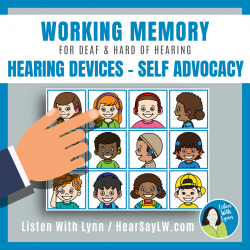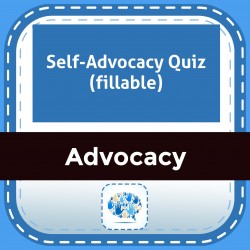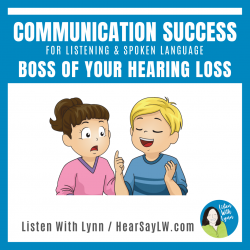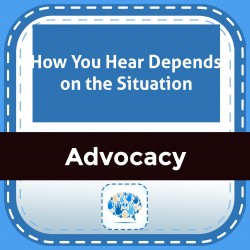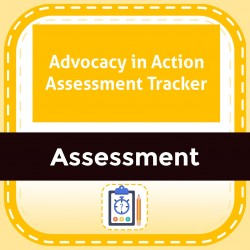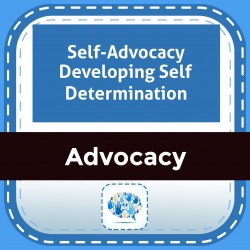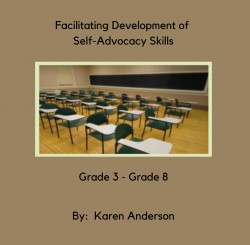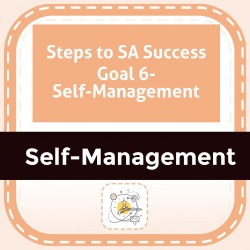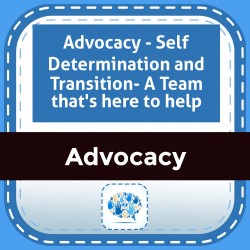Ability Levels
Categories
Resource Types
Age/Grade Range
CCSS
Anchor Standard
Speaking & Listening
Language
Reading
Let's Talk! Communication Breakdown & Repair
$ 395
A wordless book to facilitate teaching and discussion of Communication and Communication Breakdown, including vocabulary: speaker, listener, message, environment, repair. Students identify specific la
...
nguage and strategies for repairing breakdown caused by characteristics of the environment, the speaker and the message.
Hearing Devices - Self Advocacy Working Memory
$ 2
If you have students who are deaf and hard of hearing that need help with auditory working memory, executive functioning, and following directions, this Listening Finger Walk is a must-have! It builds
...
lds vocabulary about types of hearing loss and hearing devices. It boosts confidence and helps children feel good about their own hearing technology. It's fun for the kids and a simple no-prep resource for you. Just open the PDF on your screen or print it and go!The colorful playing board features 16 children wearing hearing devices like hearing aids, cochlear implants, and bone-anchored hearing systems. You can target vocabulary like unilateral, bilateral, behind-the-ear, in-the-ear, earmolds, processor, headpiece, magnet, coil, microphone, and more.This Listening Finger Walk:➼ helps build listening skills and working memory by allowing kids to work with auditory information without losing track of what they're doing.➼ targets vocabulary, descriptive skills, spoken language, and communication skills.➼ has three rounds that each increase in auditory complexity.Includes:✧ A Hearing technology or devices theme for therapy sessions or school lessons✧ Listening and Spoken Language Tips✧ Print Version: Easy print and go!✧ Digital Version No Prep Ready to screen sharePlease Note: This activity and the Positive Self-Concept Auditory Learning Games contain similar images of the same children. The resources both target self-advocacy but have different auditory and language-based goals. You will want both resources you will want in your Summer Toolbox.◈ ◈ ◈ ◈ ◈ ◈ ◈ ◈ ◈ ◈ ◈ ◈ ◈ ◈ ◈ ◈ ◈ ◈ ◈ ◈ ◈ ◈ ◈ ◈ ◈ ◈ ◈ ◈ ◈ ◈ CUSTOMER TIPS:➼ Questions? EMAIL ME before purchasing this resource or anytime later♥ ♥ ♥ Sign-up HERE for the Listen With Lynn Emails♥ Let’s Connect:InstagramFacebookKeep up your excellent work. I am blessed to help along the way.Thanks so much!Lynn Wood
Advocacy in Action Curriculum High School
$ 1050
Complete curriculum guidance and scenarios for instruction in the students involvement in IEP planning, understanding and applying the law, assistive devices, and exploring options after graduation (
...
transitioning into the workplace or postsecondary school).
Self-Advocacy Quiz (fillable)
$ 250
True/False Quiz with 4 situational word problems. Students must read situations and respond whether it reflects appropriate student rights, especially with hearing tECH-nology.
Self-Advocacy Tips for Communication Success
$ 3
Ten self-advocacy tips for communication success for children that are deaf and hard of hearing who use listening and spoken language.
...
How You Hear Depends on the Situation
$ 1
How You Hear Depends on the Situation is an instructional worksheet activity in which the student must 1) identify the level of difficulty of listening challenges, 2) provide an example of when they e
...
xperienced such a situation, 3) come up with examples of what they can do in response to the situation and 4) identify what they could ask their teacher, friends or family to do. A good teaching tool or progress monitoring activity after self-advocacy strategy instruction. From Building Skills for Success in the Fast-Paced Classroom.
Advocacy in Action Assessment Tracker
$ 1
Assessment tool and its guidelines for use. Guides the teacher, clinician, or itinerant to evaluate the student(s) and determine appropriate instruction. The assessment covers grades K-2; 3-5;6-8;9-
...
12, broken in 4 grade level segments and instruction topics. Non-fillable.
Self-Advocacy Developing Self Determination
$ 250
The key difference between advocacy and self- determination is the student is driving the bus. The student is making decisions without being told what to do. Students who are self- determined are appl
...
ying all the advocacy strategies we have been drilling, insisting on, and pushing for ON THEIR OWN! Provides goal sheets for teachers to plan self-determination activities and students to set goals for themselves.
Facilitating Development of Self-Advocacy Skills
$ 495
This
packet of instructional materials provides teacher guidance information
followed by assessment and instructional materials to use to teach students
to recognize listening challenges
...
and related self-advocacy strategies. From Building Skills for Success in the Fast-Paced
Classroom.
Steps to SA Success Goal 6- Self-Management
$ 3
Success in advocacy requires forethought and planning. The knowledge of problem-solving skills combined with an understanding of emotion-based behavior (Goal 4) are used in decision making and self-ma
...
nagement. Decisions are different from problems in that there is personal interest in the outcome. Students will understand the difference between qualitative and quantitative information and how it relates to decision-making.
 Your browser is out of date. For best experience switch to latest updated Browser.
Your browser is out of date. For best experience switch to latest updated Browser.
 Get Chrome
Get Chrome Get Edge
Get Edge Get Firefox
Get Firefox
